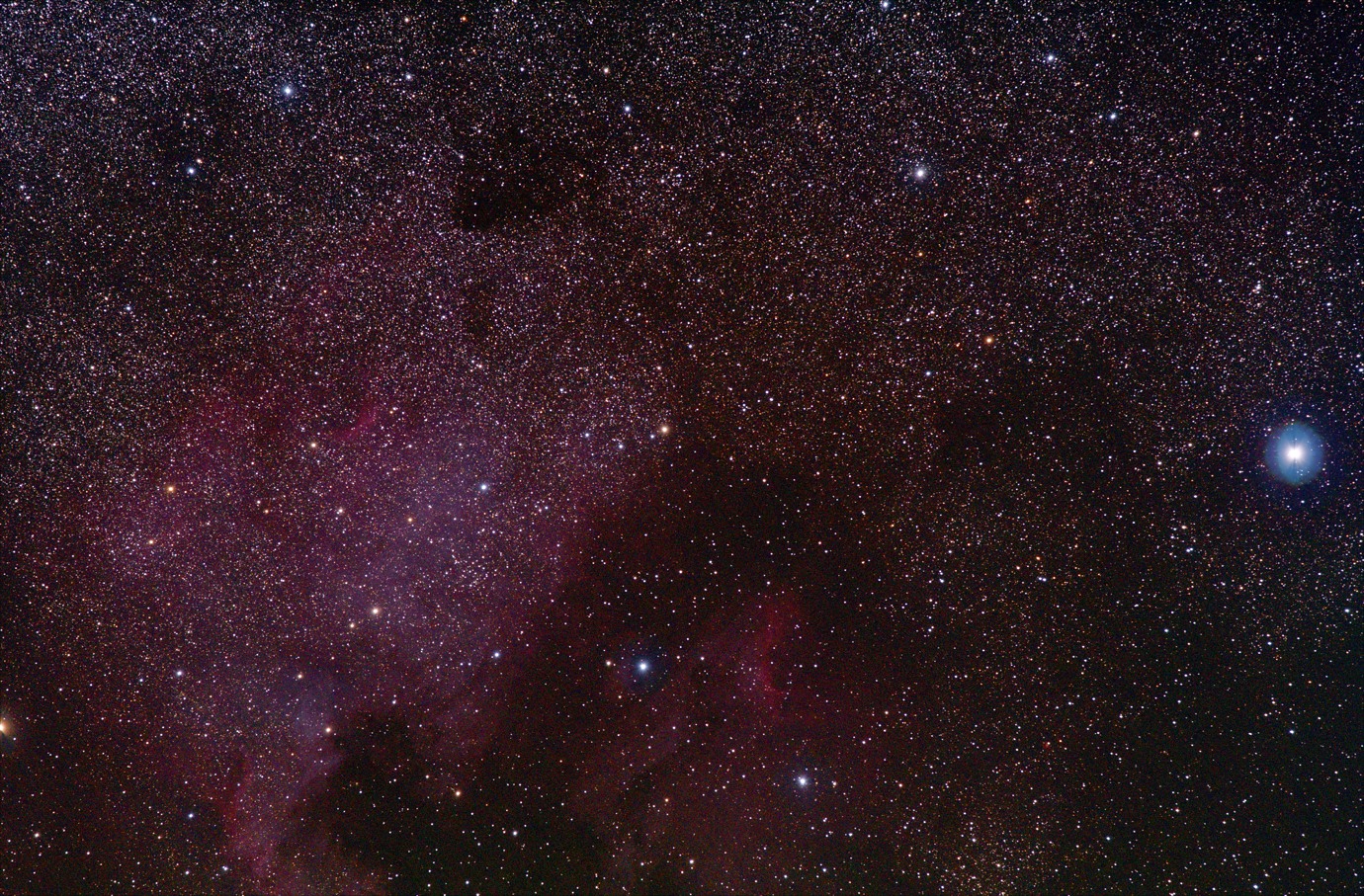Finally the dark season is back and I got a few dark clear nights without much moonlight and aurora so that I could try out my red dot sight clamped to the lens collar for night sky captures. In addition I introduced one other change to my setup: I have usually used my 300mm f/4 PF stopped down 1/3 stop to f/4.5 to improve coma/astigmatism performance in the corners. However the slightly non-round aperture and many aperture blades do not create particularly attractive diffraction spikes at this aperture. Instead I introduced a round front aperture to the lens to remove the spikes and get rounder stars by adding a 77-67mm step down ring which gives very close to f/4.5. Some daylight exposure tests confirmed this in practice.
The accuracy of the red dot sight without any on site adjustments was very inspiring. I can now with high precision seek out night sky objects with no fear to bump the sight out of position. And since it builds higher I can view a centered red dot without moving the right angle finder out of position.
I have made one more adjustment to my routines: I try to let the tracker get some load in the opposite direction of its rotation to avoid that potential slack in the worm drive causes mis-tracking. (Symptoms of this is when stars now and then becomes two dots instead of one). As I mount the camera by the L-bracket it was easy to slide it left in the clamp (aiming south). This has given really good tracking results with the 300mm PF, and since I am imaging high in the sky the periodic error of the tracker also becomes less important while correct polar alignment is more critical. After deleting frames with satellites, I typically asked DeepSkyStacker to stack 95% of the frames in the following captures.
The autumn is a nice time with it clear air, no snow to reflect the light pollution and not too cold (last captures below was at -6°C) but enough to keep the sensor relatively cool. Since part of the milky way was at good position south of my cabin, that is where I aimed. All images are stacked 60 sec. exposures at f/4.5 and ISO 1600 except # 2 where I used 30 second exposures. Focus was mostly by using a barely visible star and confirmed with the Bahtinov mask on the lens.
First out is the Crescent Nebula (a mirrored C) to the lower right and the warm Cooling Tower star cluster at the 1/3 upper left. This is about 74 minutes integration time.
#1
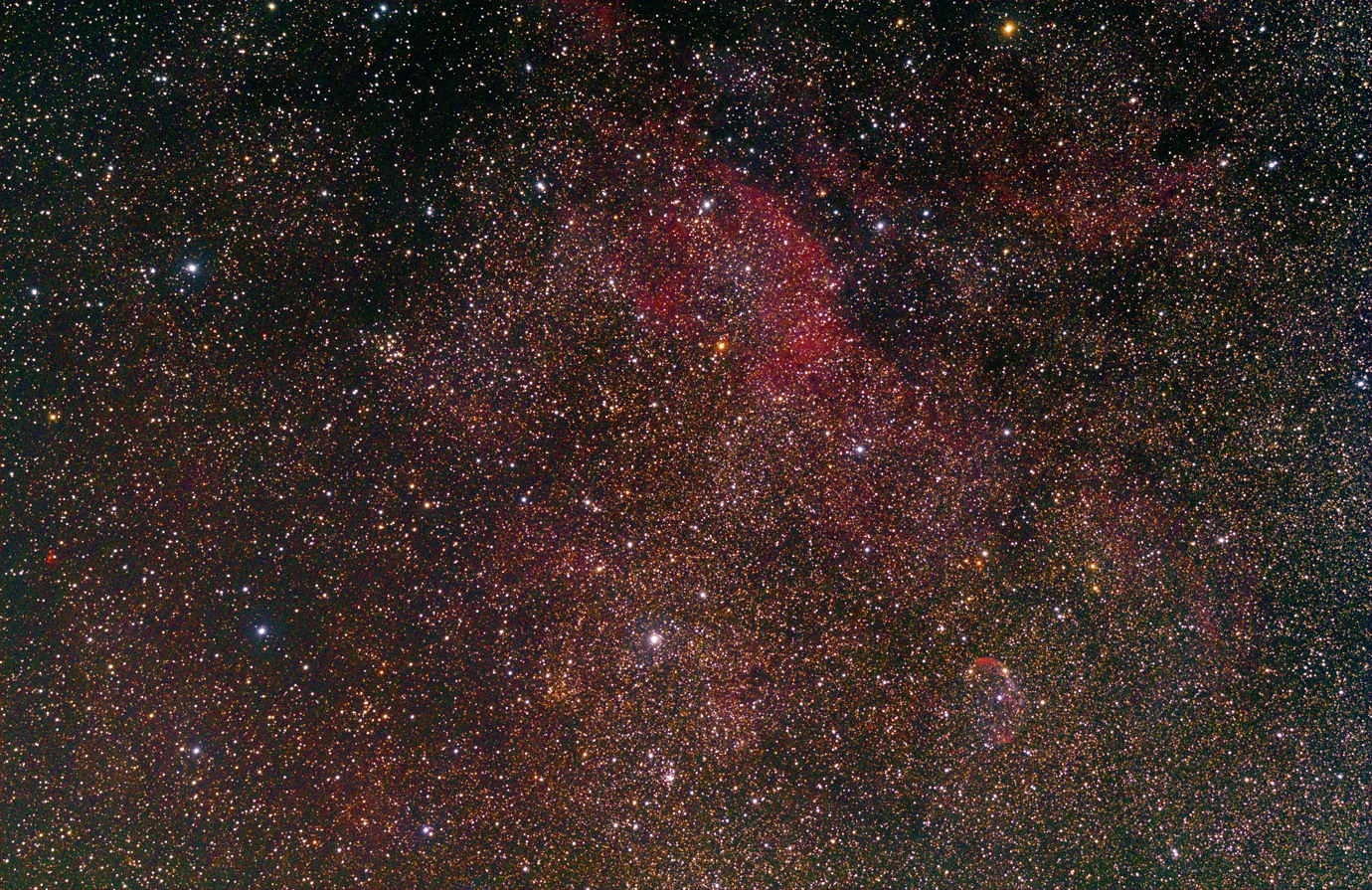
This inspired me to try something wider, the 50mm f/1.8. However preliminary tests indicated problems with "gull wings" (coma/astigmatism) in the corners and had to be stopped down to f/3.5 for acceptable performance. Here are the regions near the center of the Cygus constellation, about 45 minutes total integration time. The image above was just below the bright Sadr star near the middle of this view. I had to crop on the right as a tree got in the way towards the end. Also I was troubled by some gradients from lower left corner that I had to correct (likely from light pollution) and there is some remaining purple fringing that affects star color.
#2
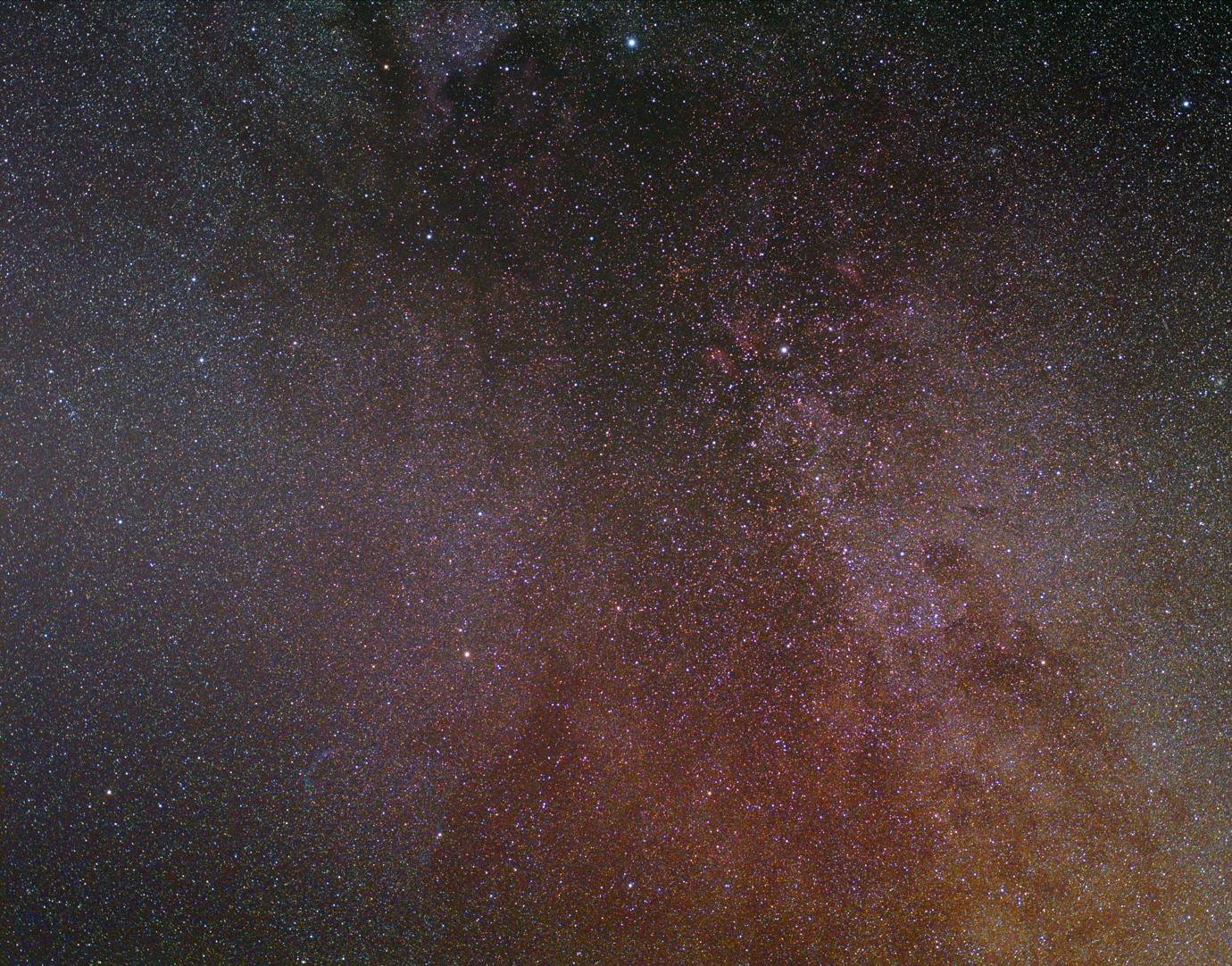
It is always good to start the season with a well known object. When the lower part of the Milky Way moved out of range, it was good to aim the 300mm PF towards M31, the Andromeda Galaxy. I used 95% of a total integration time of 102 minutes.
#3
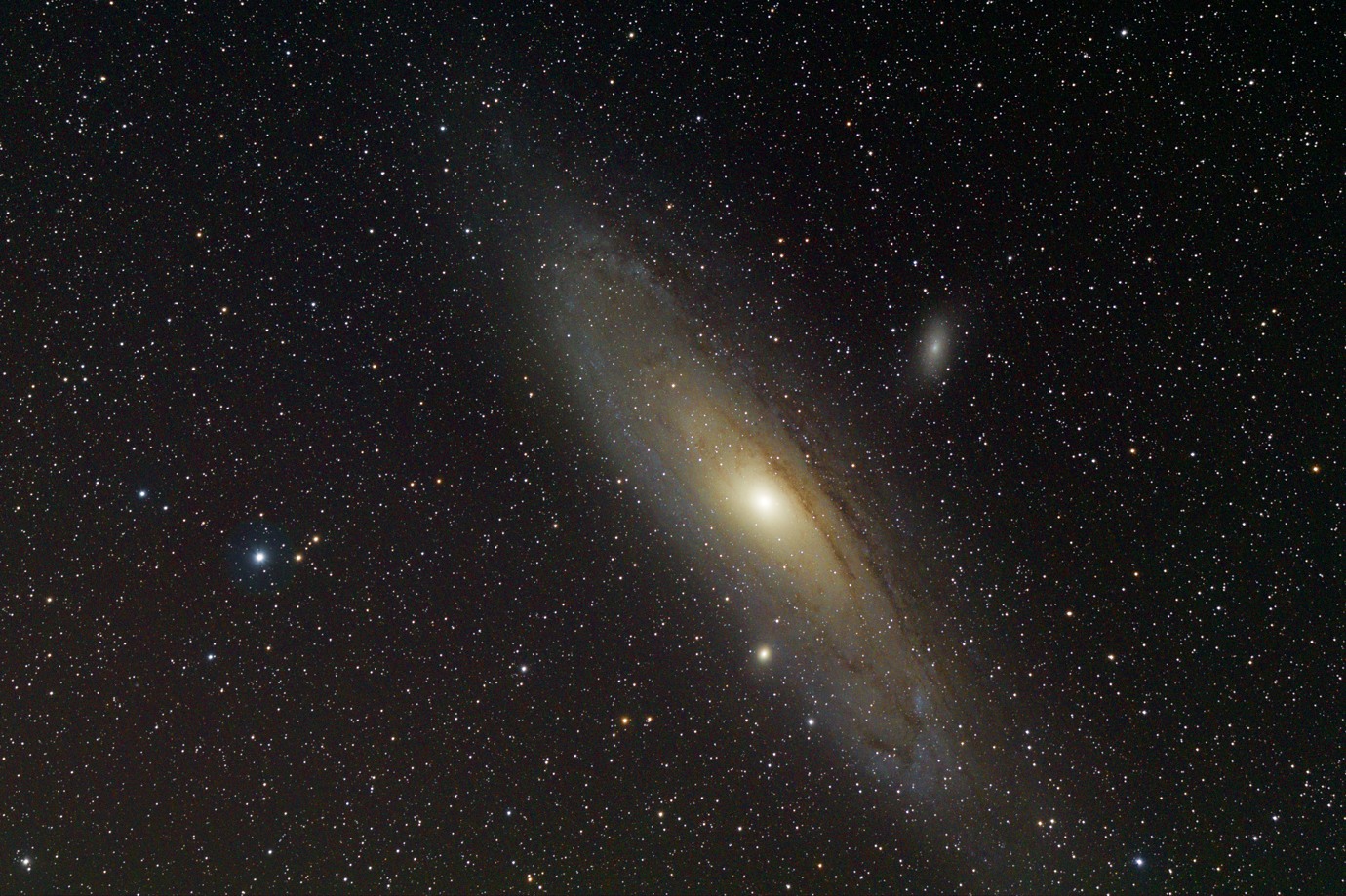
In the wider image of the Cygnus region (#2), one can barely make out a rounded shape to the lower left. That is the Veil Nebula. I had a little time one evening that started out clear and had to try. However it was too low in the sky from my position before the roof of the neighbor cabin came into the field with the 300mm PF. Thus I only got about 15 min integration time without obscured view.
#4
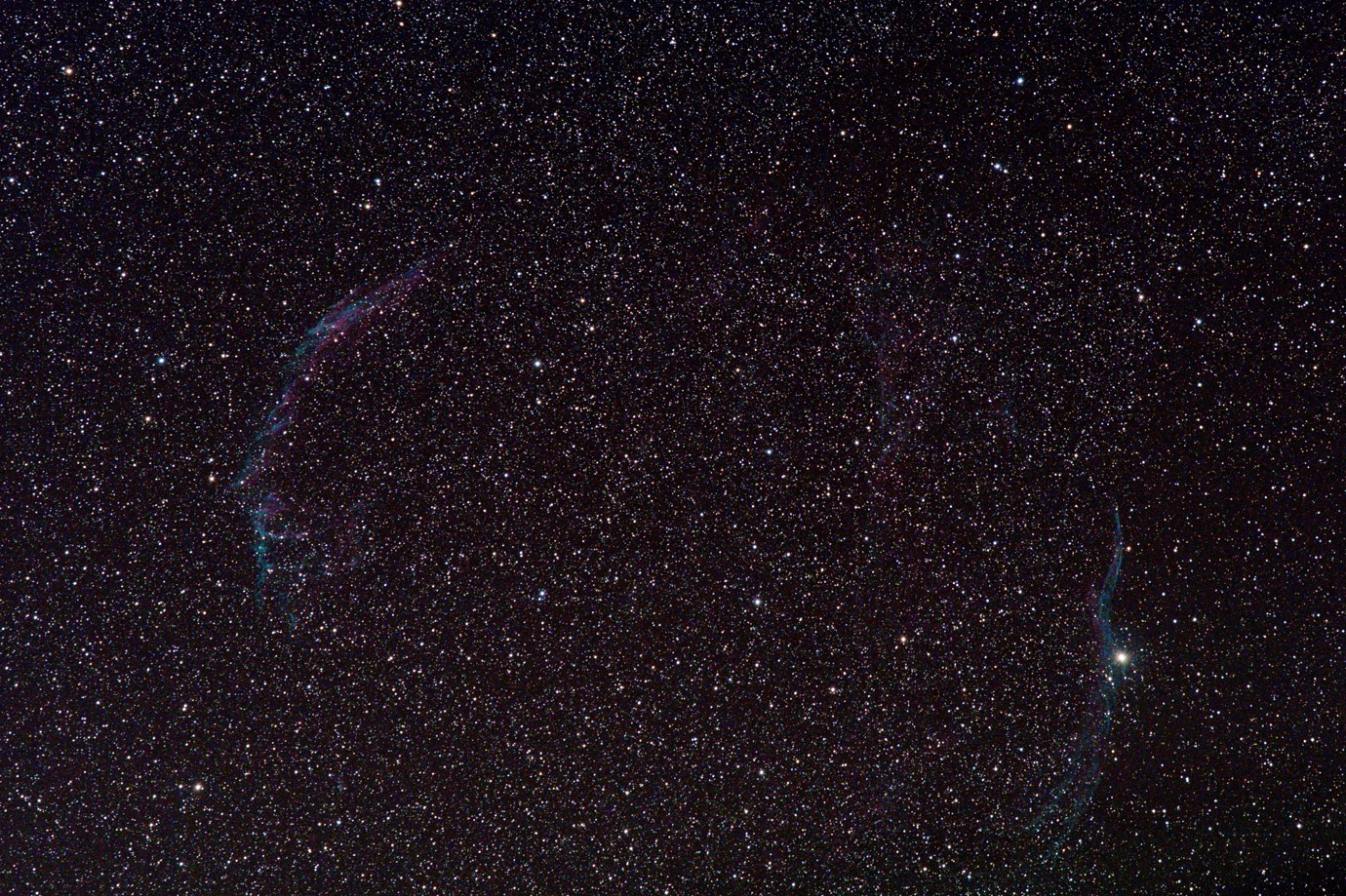
If cropped at the bottom I could use about 30 minutes of integration time. I am not sure which one is best; colors are of course best in this one, but composition might suffer from being cropped. This will certainly be a target in my mind if I get a new change soon. Currently we got into the dark cloudy rainy mode so it might be a while.
#5
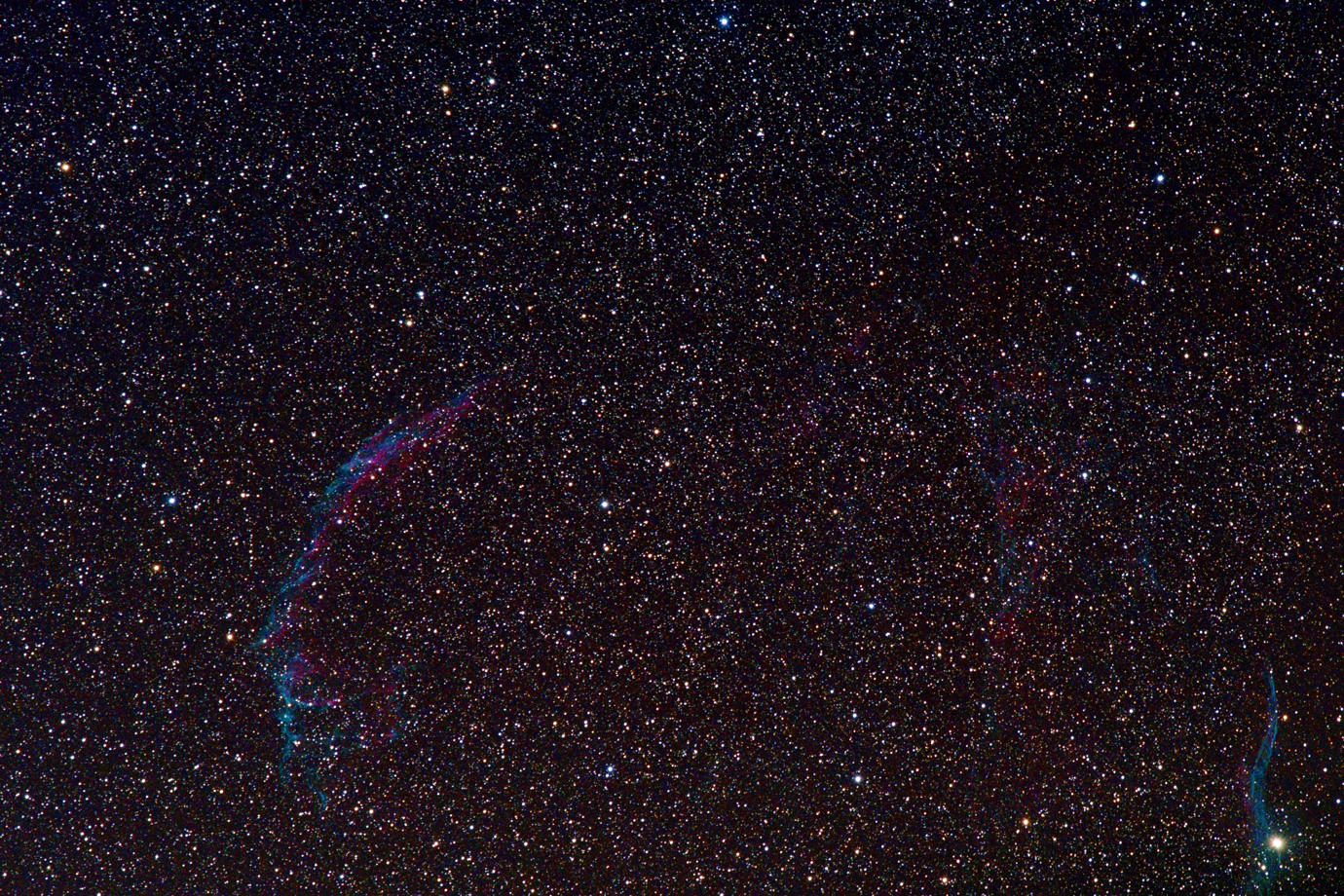
So I looked for something higher in the sky to image, and wondered what could be in the region to the left of the very bright Deneb star. However this time I started to get blasted by aurora after only 15 minutes. Nevertheless I stacked everything except the most intense period, and was surprised by the image I got from about 28 minutes integration time without troublesome gradients. A surprising amount of red hydrogen alpha emission was picked up by my non-modified D7100.
#6
